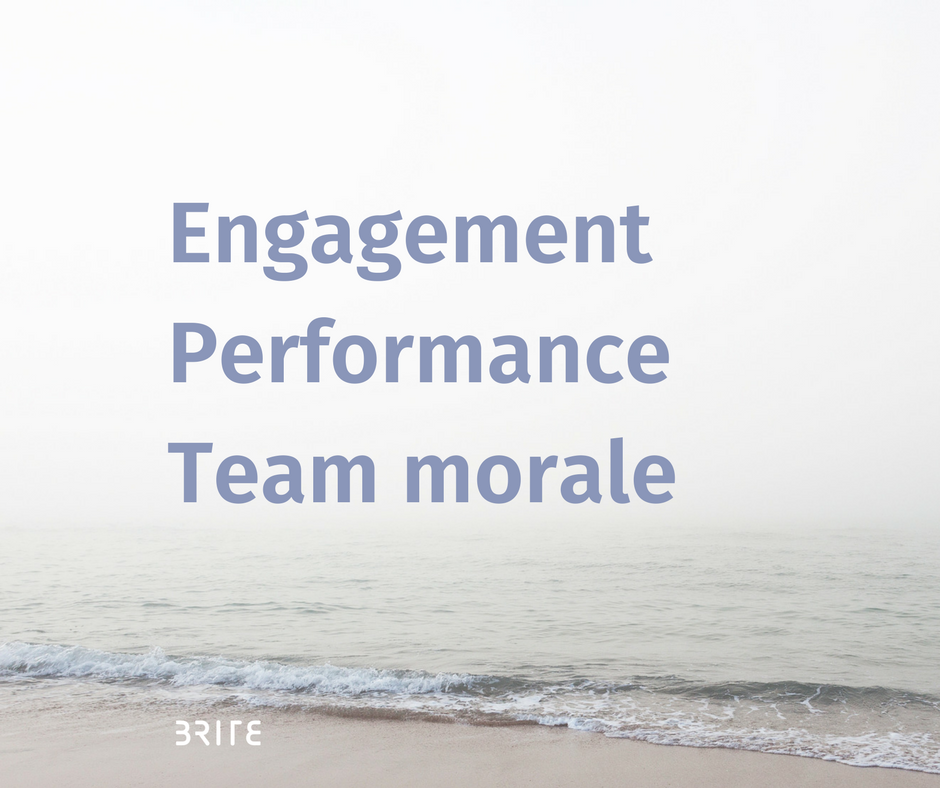As companies continue to challenge traditional business models and adapt to the ways in which digitalization is impacting on their relationships with customers, the importance of engaging in self-reflection is becoming increasingly evident. We’ve seen this in the way companies get involved in Corporate Social Responsibility initiatives, the steady growth of Social Enterprises, and the shift towards more sustainable supply chains.
The idea behind these kinds of initiatives is closely related to new ways of understanding and creating value. It’s taken long enough, but many companies are now seeing the path to success as a marathon instead of a sprint, and are therefore focusing on sustainable growth over the long-term.
A significant part of this long-term thinking and self-reflection deals specifically with employee well-being. Considering the fact that employees are often a company’s backbone and key brand ambassadors, the link between their well-being and their ability to perform their jobs at a consistent level seems obvious. After all, employees have arguably been treated like machines for the longest time, so why not ensure they are well maintained like machinery critical to a particular manufacturing process?
Focusing on employee wellness is not entirely new, though the concept has been evolving recently to include a lot more than one might initially think. Much like health and safety initiatives in the workplace, employee wellness programs are not only beneficial to the individuals they target, they are also good for business. And regardless of what anyone says, businesses aren’t engaging in employee wellness simply because it seems like the right thing to do. It’s actually a smart business decision within the marathon towards sustainable growth.
In this context, wellness can be defined as an active process of becoming aware of and learning to make proactive healthy choices. As such, a wellness program is one designed and implemented to improve the health of a particular labor force.
There’s a lot of data outlining the benefits of wellness programs. Some of the more convincing stats include an average savings-to-costs ratio of $5.93 to $1, and an average reduction in health costs (26%), number of workers’ compensation and disability management claims (30%), and sick days (28%).
The benefits of employee wellness initiatives go beyond saving money and time, too. A Harvard Business Review article by Jim Purcell on the topic stresses that physical wellness can impact on engagement, performance and team morale. Furthermore, given that so many of us spend more time working than doing anything else, the workplace is indeed an ideal setting to improve upon individual wellness. These are benefits that might not be as easy to quantify in terms of cost savings, but they can indeed impact on results and the overall flavor of a brand.
Sure, when it comes to wellness initiatives, results depend largely on the quality of the specific program in question, but there’s a lot of valuable information out there, as well as a number of third-party companies who specialize in developing these programs.
As noted above, employee wellness is undergoing an expansion, continuing its evolution from the basic principle of learning to make proactive healthy choices towards greater levels of self-reflection. Again, it’s about certain intangibles that might not be easy to account for in terms of return on investment, but might still bring great value to a company and its employees. And if we’re going to spend the majority of our adult lives at work, there ought to be a little more than the perceived stability a regular paycheck and a retirement plan give us.
Mindfulness has broadened the idea of employee wellness. In their article on the topic, Daniel Goleman and Matthew Lippincott define mindfulness as, “a method of shifting your attention inward to observe your thoughts, feelings and actions without interpretation or judgment.” This might seem a bit far-fetched at first, especially within the business context, but like wellness initiatives, research points to a number of valuable benefits associated to mindfulness.
Studies have shown that mindfulness training and sustained practice lead to significant improvements in three capacities that are especially critical for successful leadership: resilience, collaboration, and the ability to lead in complex situations.
On an individual level, improving these capacities can lead to stronger relationships with superiors, peers and subordinates, heightened output, better project outcomes, improved crisis management skills, and positive performance reviews. And like wellness initiatives, these benefits are easily carried over into one’s everyday life.
So how is mindfulness practiced? Mindful.org takes a basic approach to practicing mindfulness: set a bit of time aside in a place that feels calm and quiet to you, sit down in a position your comfortable in, notice your body, feel your breath, notice when your mind has wandered and be kind to your wandering mind. That’s it!
The act seems ridiculously simple compared to the benefits that can be drawn from it, right? The key is to practice daily, even twice a day for ten minutes each time. Consistent practice will sharpen one’s ability to see when their mind has wandered and allow them to consciously bring it back to the present moment - to the breath. The breath is an anchor to the present moment, and being able to place yourself within the present moment on a day-to-day basis will allow for better focus and clarity, as well as improved listening and decision-making skills.
Regardless of whether or not research supports the benefits of mindfulness, companies are promoting mindfulness and giving employees a chance to better understand different methods of practice that go beyond the basic description provided above. It’s not just yoga mat and gluten-free snack bar companies, either. Google, Target, Intel and General Mills are all investing in mindfulness. So is Green Mountain Coffee Roasters, who offers monthly daylong mindfulness retreats to its employees, their families and friends, and the community at large.
In fact, mindfulness retreats are growing in popularity throughout the business world and among those in leadership roles. One of Brite’s customers, Zurich Retreat, believes that our future as a society lies in a connected and holistic approach to life, purpose, humanity and consciousness. Mindfulness is indeed at the core of this holistic approach. The company provides a place for leaders and teams from various industries to recharge, connect, create, and of course, practice bringing their minds to the present moment.
Businesses like Zurich Retreat and the mindfulness they try to facilitate are clear reflections of the fact that we are more than just machines that require regular mechanical maintenance. Our minds are the difference here, and tuning into this difference can not only impact on our conduct as individuals, but can also help shape the way we approach work and business, and encourage a new way of seeing things that are all too familiar.
Bradley Castelli
Bradley Castelli





